What’s Up With the Rail Negotiations?
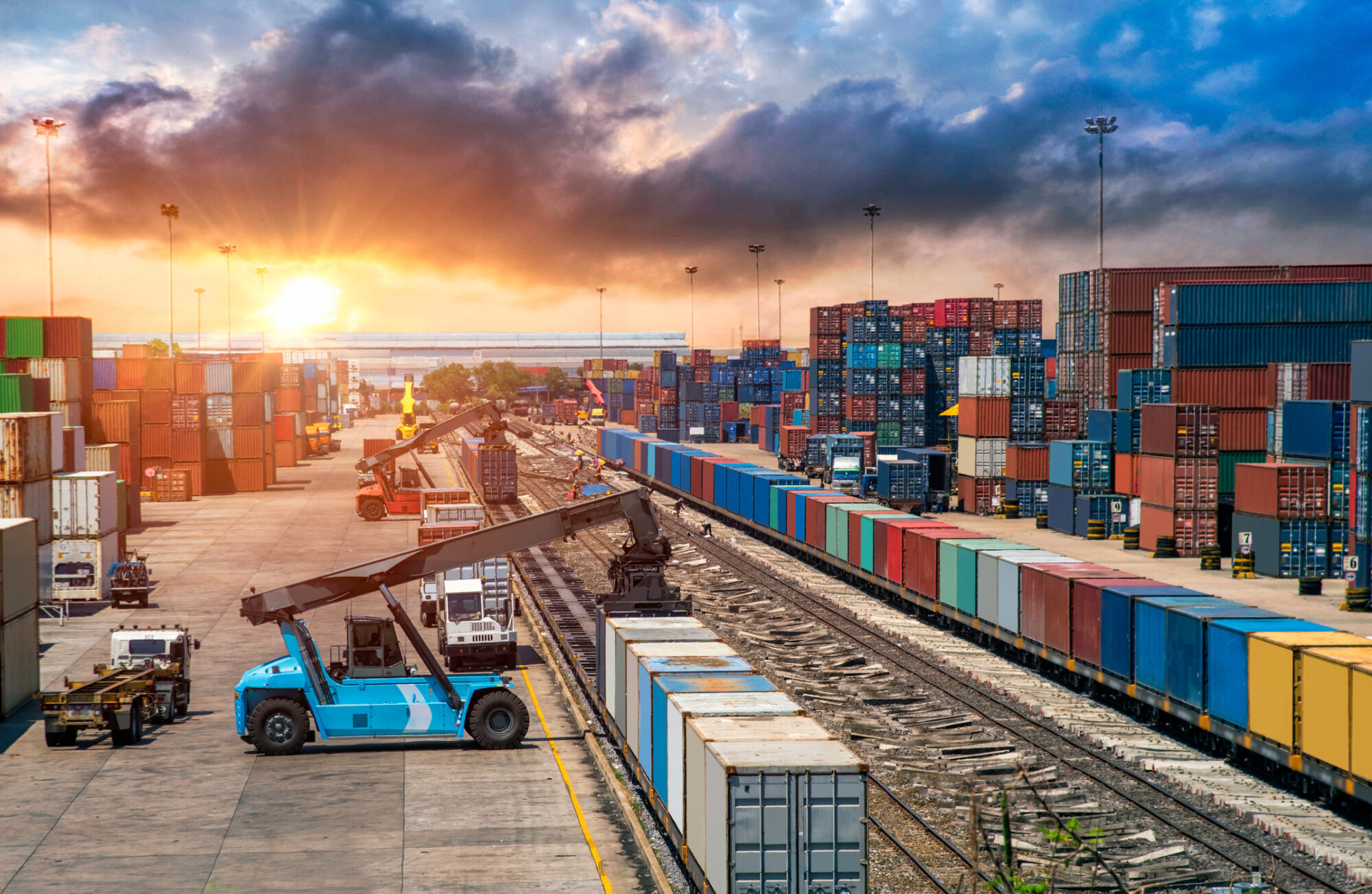
With the possibility of a national rail strike looming in the near future, the NAM is working with association members, congressional leadership and the White House to urge all parties toward a final resolution. On Monday, the NAM held a members-only briefing with remarks from senior leadership of the Association of American Railroads and personnel involved in the ongoing collective bargaining process.
- NAM members in attendance had the opportunity to hear about the state of play directly from representatives of the rail industry, and the message was consistent with the NAM’s own: that the situation is critical, and that a lack of an agreement would be devastating for railroads, for manufacturers and for the wider U.S. economy.
The background: For nearly three years, railroads and their unions have been discussing the outlines of a new long-term contract.
- Two months ago, U.S. Class I railroads and the various labor unions composing the rail workforce agreed to a deal brokered in part through efforts led by the Biden administration that temporarily averted a strike, pending ratification votes by each union’s rank-and-file membership.
- Although more than half of the unions involved have now ratified the agreement, at least two unions have voted to reject it—raising the likelihood of a strike.
The situation: Seven unions have ratified the proposed agreement, two have rejected the deal, and three have yet to vote. As it stands now, the hard deadline for unanimous agreement by all unions is 12:01 a.m. on Saturday, Nov. 19, at which point a strike could be called.
The outlook: During the NAM’s event, the speakers acknowledged that Class I freight rail companies will have to begin making decisions about possible disruptions and metering rail service as soon as this weekend.
- Leading up to the Nov. 19 deadline, manufacturers may receive notifications that some products cannot be moved on certain rail lines.
Next steps: It will be critical for stakeholders to press Congress and the administration either to work with unions to extend the Nov. 19 deadline, or to intervene with legislation that puts in place an agreement like the one recommended in September by the Presidential Emergency Board.
What we’re saying: “Manufacturers are urging congressional leaders to be prepared to bring stability and predictability to the economy if a rail strike and shutdown occurs,” NAM President and CEO Jay Timmons said today.
- “We already face economic turmoil with rising costs, product shortages and high inflation. Any nationwide rail strike or shutdown will cause even more economic pain. Manufacturers urge all parties to work rapidly—for the good of the country—to conclude this collective bargaining process.”
NAM Guides Treasury, IRS on Climate Incentives

The Treasury Department and the IRS can help the U.S. meet its climate goals—if both agencies “can leverage private sector ingenuity, expertise and capital” both transparently and inclusively, the NAM told Treasury late last week.
What’s going on: This year’s reconciliation legislation contains advanced manufacturing, clean energy and climate incentives to invest $369 billion in actions that will address climate change, including $270 billion via direct tax incentives.
- These measures can be successful if “Treasury and the IRS quickly address the critical details of how each of these incentives will work in tandem with clean energy and advanced manufacturing projects that have already begun and those that have yet to be conceived,” NAM Vice President of Energy and Resources Policy Rachel Jones told the agencies.
- Treasury must also work to ensure the incentives are used “in a way that quickly brings new private capital to bear” while keeping projects on schedule.
Manufacturers’ input needed: Engagement with manufacturers should help the agencies develop their rulemaking, Jones said.
- “To meet our shared goals, including achieving meaningful emissions reductions, Treasury and the IRS should maintain an open line of communication with the NAM’s members of all sizes and sectors,” she said.
- “Without thoughtful engagement with manufacturers, the clean energy and climate incentives could have the opposite of intended results, and in some cases projects could stall, communities will face further disappointment, energy security will be jeopardized and climate goals will go unmet.”
What’s not needed: “It would be shortsighted to implement guidance and rules that exclude or indirectly penalize manufacturers that are already making significant capital investments in clean energy projects,” Jones said.
Teamwork—and plain language: The NAM also urged Treasury and the IRS to make clear their definitions and qualifications when it comes to clean energy and climate tax credits.
- Jones recommended cooperation across the “entire federal family” to combat climate change—from the Nuclear Regulatory Commission to the Department of Defense to the Federal Energy Regulatory Commission and many more.
NAM about town … The NAM participated in a Treasury roundtable yesterday where it shared the specific concerns and constructive input from manufacturers more directly.
Energy Manufacturers Need Policy Support
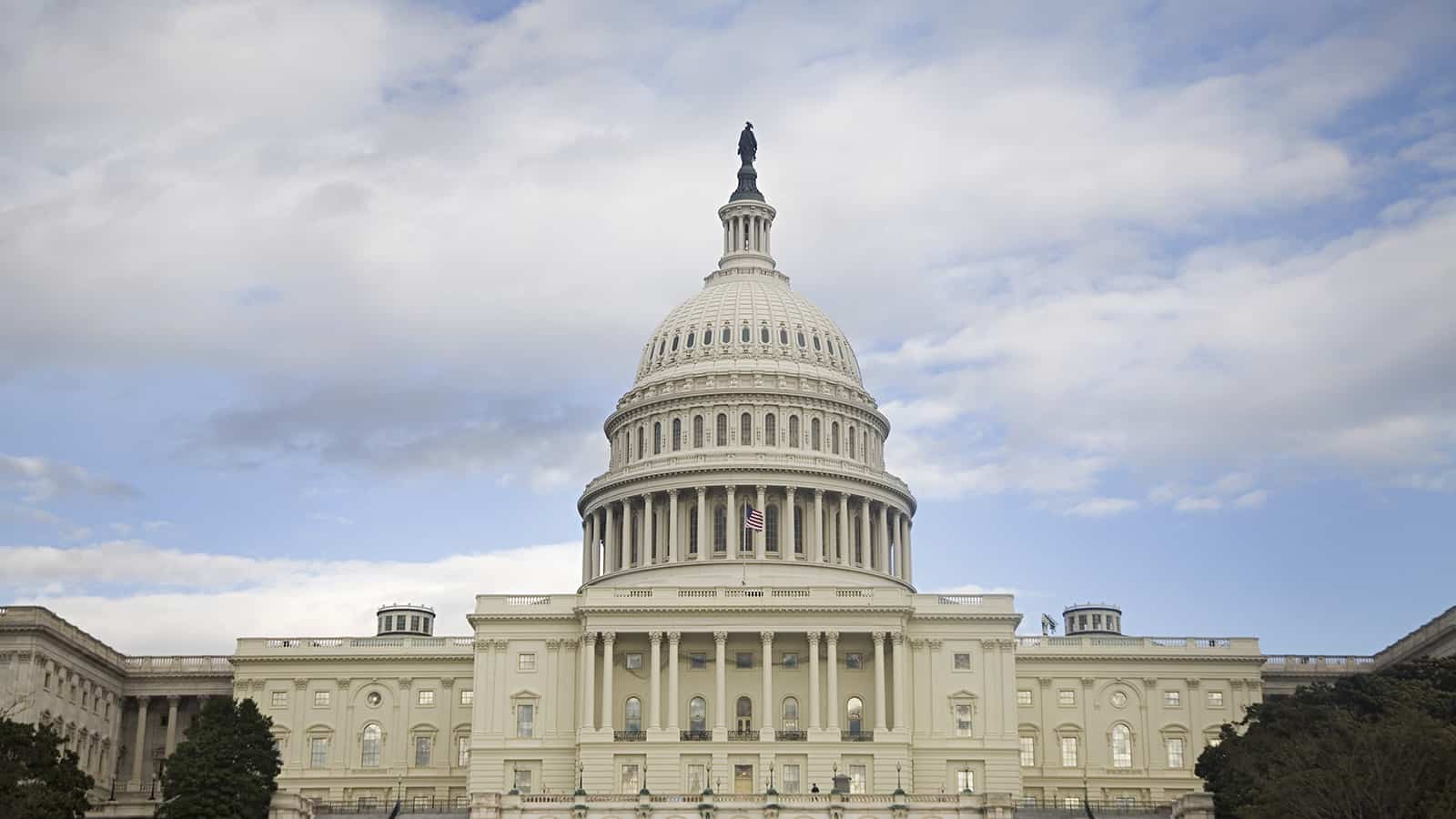
As the world’s leading energy producer, the U.S. is poised for long-term energy independence and competitiveness in the global marketplace—but only with the right policies in place.
The right recipe: That’s the theme of the NAM’s energy and natural resources advocacy in its policy blueprint, “Competing to Win,” and it’s the recipe for continued success for all manufacturers in the U.S.
- Manufacturers lead the way in finding new means of harnessing our abundant sources of energy, but to make long-term investments and continue to innovate, policymakers should draw up and stand by a comprehensive framework for a secure energy future.
Keep us competitive: The NAM calls on legislators to take specific actions to keep energy manufacturing in the U.S. competitive. These include:
- Streamlining regulations that slow access to our rich supply of energy, minerals and other natural resources;
- Expediting the regulatory and legal processes involved in developing clean energy technologies and promoting energy and energy technology trade;
- Fixing the broken permitting process for energy production and infrastructure projects;
- Promoting access to federal lands and waters for environmentally responsible mineral, energy and resource exploration;
- Supporting measures to enhance development and deployment of energy-efficient technologies;
- Backing domestic critical mineral extraction, recycling and processing; and
- Expanding the useful life of critical minerals components using federal programs and funds.
Focus on the environment: Energy produced in the U.S. is cleaner and more responsibly sourced than energy produced in other nations.
- When U.S. policies fail to encourage production here at home, they encourage production in other parts of the world, where there is far greater adverse impact to the environment.
Security through innovation: Sound, thorough and competition-focused energy policy will give energy manufacturers in the U.S. the stability they need to invest for the long term.
- Innovation, energy security and greater affordability—not just for the U.S., but for other countries as well—will follow.
The last word: “The future of the manufacturing industry and our country’s resource security rely on clarity and certainty from policymakers that strengthens our competitiveness,” said NAM Vice President of Energy and Resources Policy Rachel Jones.
- “With a renewed commitment to increasing domestic energy production and delivery, to focusing on critical mineral and material supply chains and to advancing new technologies, the United States can continue to lead the world for decades to come.”
Vermeer Corporation Speaks Out on R&D Tax Policy
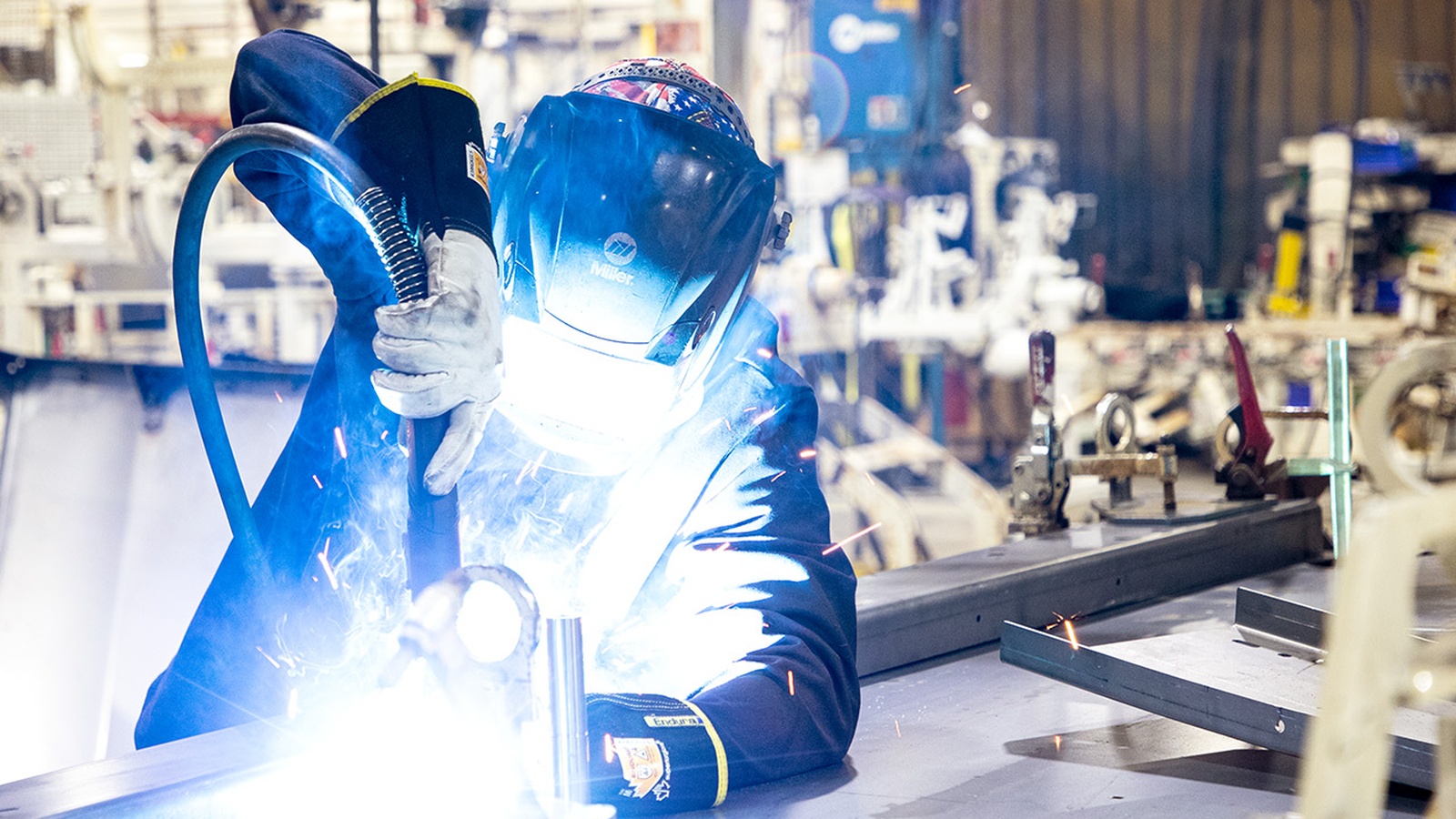
This story can also be found within the NAM’s R&D action center.
After a tax law change went into effect in 2022, manufacturers across the country found themselves facing new obstacles to investment in research and development. For Vermeer Corporation—a manufacturer of industrial and agricultural equipment based in Pella, Iowa—the change is causing real concern.
The background: Until the beginning of this year, businesses could deduct 100% of their R&D expenses in the same year they incurred the expenses. Starting in 2022, however, a change in the tax law required businesses to spread deductions over a five-year timeframe. That change is making investment more expensive and preventing some companies from putting their resources into critical innovation.
Constant innovation: As a company that makes a variety of diverse products for fields like agriculture, mining, utility construction, forestry and renewable energy, Vermeer is always working at the cutting-edge of new technology, and that requires significant investment in R&D.
- “Vermeer designs and builds specialized equipment—and it has to be innovative,” said Vermeer Corp. Senior Director of International Business Development and Government Affairs Daryl Bouwkamp. “We have to push that leading edge constantly. The history of Vermeer is a history of invention and innovation.”
Vital competition: According to Vermeer, R&D is also vital to the ability of manufacturers in the United States to compete with foreign companies.
- “We’re not the only company that’s innovating around the world,” said Vermeer Vice President of Finance Ryan Agre. “There’s pressure from companies in countries that are producing products like ours.”
Immediate impact: The new tax law has already had a serious effect, according to Agre.
- “It’s a material, meaningful impact,” said Agre. “It’s millions in additional tax that we will incur at Vermeer just next year—and that’s the one-year impact, so it’ll be even more significant over a five-year implementation period. We’re actively having to harvest cash elsewhere to offset this impending change.”
Pushing back on China: The U.S. tax law change also stands in stark contrast with policies from countries like China, according to Vermeer.
- “When you look at the generosity of foreign support, especially China’s, versus the United States, it’s so lopsided,” said Bouwkamp. “China is trying to drive behavior toward R&D—and that’s something we’re lacking.”
The big picture: Agre also noted that making R&D more expensive can make companies like Vermeer risk-averse—more likely to direct the investments they do make toward smaller or more incremental innovations, and less willing or able to invest in the kind of ambitious research that can offer truly transformative results.
- “We don’t know what we haven’t discovered yet,” said Agre. “We have a history of being innovative in new spaces, and that requires individuals to have funding and freedom of thought to go out and experiment. When you’re trying to create something that doesn’t exist today, you’re going to hit some home runs—but you’re also going to strike out a bit. When you need more certainty, you start cutting out uncertainty and making fewer investments in big ideas. That impacts not just Vermeer but the whole economy.”
What Manufacturers Want on Trade Policy
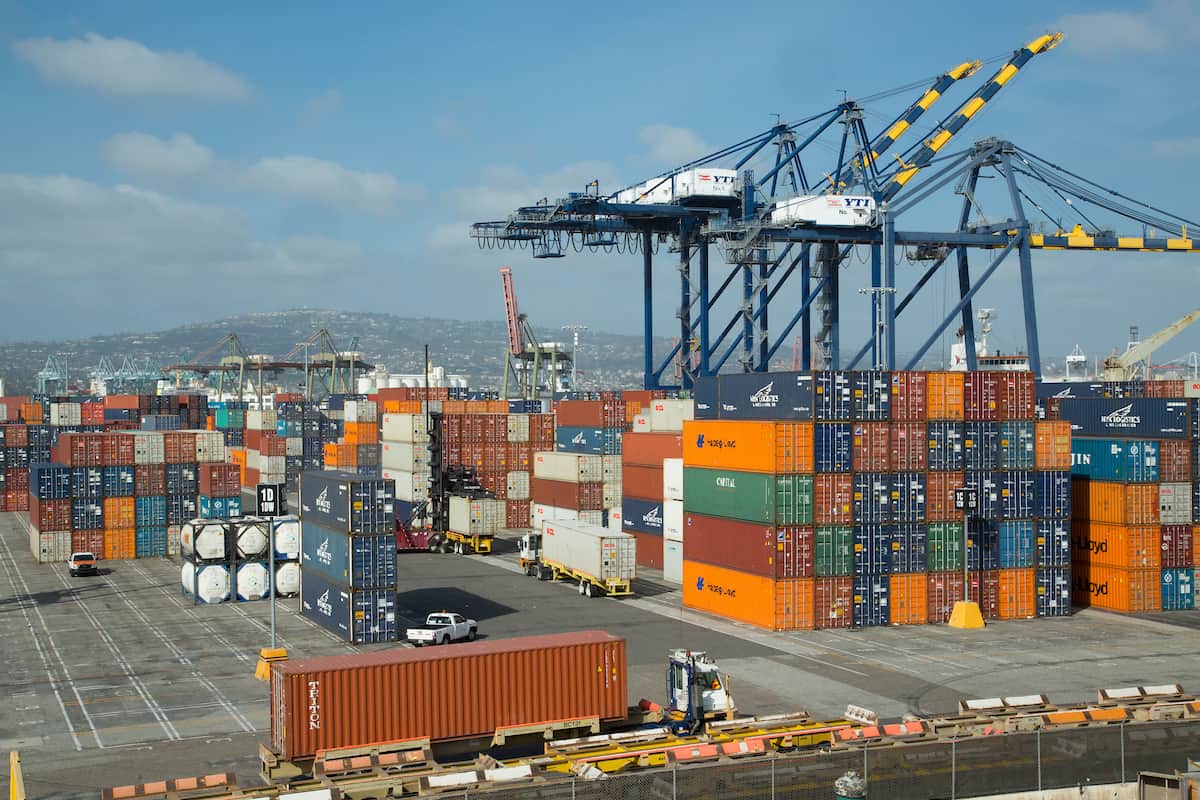
Manufacturers of all sizes must be able to compete in a global economy—and that means selling not just to consumers in the U.S., but also to the billions of consumers who live around the world. That’s why the NAM is standing up for a robust U.S. trade policy that advances strong rules and partnerships that promote open markets, improve competitiveness, increase business predictability and boost manufacturers’ ability to reach new customers abroad.
Our priorities: The NAM is interested in a U.S. trade agenda that supports open global markets so that manufacturers can benefit globally from the same principles that we value at home: nondiscrimination, fairness, equal opportunity and competition.
- It is also focused on pushing back against foreign practices that harm manufacturers and their employees in the U.S. and holding countries like China accountable. Ultimately, the NAM is committed to improving U.S. global competitiveness, supporting innovation, growing the economy and strengthening the industrial base.
Our solutions: To accomplish these goals, the NAM has offered a series of solutions for national policymakers and other leaders, including:
- Implementing the CHIPS and Science Act and pursuing additional legislation to strengthen supply chains and support a STEM workforce;
- Negotiating cutting-edge trade agreements and enforcing existing trade rules;
- Comprehensively enforcing existing U.S. trade agreements, including full implementation of the United States–Mexico–Canada Agreement;
- Standing firm in support of strong global intellectual property protections;
- Accelerating efforts toward a clear, comprehensive U.S.–China strategy that promotes fairness, accountability, enforcement and business certainty;
- Reforming international trade rules and institutions, such as the World Trade Organization;
- Bolstering U.S. export promotion and financing tools and reforming export control policies;
- Modernizing customs operations to cut red tape; and
- Updating the U.S. tariff code, including through enactment of the Miscellaneous Tariff Bill.
What we’re saying: “Manufacturers believe that strong U.S. global economic leadership and engagement with our allies—including by forging strong, enforceable U.S. trade agreements—are critical to tackling shared global challenges, expanding export opportunities, diversifying sources for trade, ensuring supply chain resiliency and promoting American values,” said NAM Vice President of International Economic Affairs Ken Monahan.
- “Without such trade deals, manufacturers in the U.S. risk being left behind our global competitors, many of whom are actively negotiating new agreements that exclude us. The time is now for the U.S. to get back in the game.”
Learn more: Find out more about the NAM’s priorities around trade in “Competing to Win”—a blueprint for policies that support manufacturing in America.
Why Policymakers Should Support—Not Hinder—R&D

This story can also be found within the NAM’s R&D action center.
Manufacturing is an industry built on innovation—but with a recent change in tax law, manufacturers are encountering a new and major obstacle to the critical research and development investments they need to make in order to compete at home and around the world.
The background: Up until January 2022, a business could deduct 100% of their R&D expenses in the same year those expenses were incurred. But a change to the law that took effect this year now requires businesses to spread those deductions over a period of years, making investment in innovation more expensive.
The manufacturer: At Brewer Science—a Missouri-based manufacturer in the semiconductor industry—this issue has become an urgent challenge. The company is a top producer of materials needed to make semiconductor chips.
- In such a fast-moving industry, staying competitive requires nonstop innovation—and that demands constant investment in new products and processes. According to Brewer Science Executive Vice President Dan Brewer, a significant percentage of the company’s revenue goes back into R&D every year.
- “Semiconductors are everywhere, and new generations are constantly being created,” said Mr. Brewer. “The only way to compete abroad in our industry is to out-invent the competition.”
The impact: By making R&D investments more expensive, the tax code hinders manufacturers’ ability to make necessary expenditures not only on innovation, but also on other kinds of growth. Already, the harmful tax change has impacted Brewer Science’s bottom line and put a hitch in its plans for the future.
- Because the new law requires a deduction to be spread out over five years, companies are paying more in taxes than they were a year ago—a result that is causing them to reassess future investments.
- “We have a long list of new hires that we’re trying to bring on board and new projects we’d like to begin, and now we’re looking to make adjustments,” said Mr. Brewer. “Which projects can we put on hold? Which hires can we delay? It’s unfortunate that the same people who want investment in onshoring our industry are penalizing those that are already here.”
The ask: Brewer Science’s request is simple: return the tax treatment of R&D expenses to the way it was so that manufacturers are not penalized for pursuing the R&D that is necessary to spur economic growth and maintain America’s global leadership in innovation. There is still time to undo this for the current 2022 tax year, but time is quickly running out.
- “We’re not asking for a handout,” said Mr. Brewer. “We’re just asking Congress to allow us to immediately deduct these expenses as has been the case for nearly 70 years, since before Brewer Science was even a company.”
The big picture: Mr. Brewer is also quick to point out the widespread impact of this change, especially for smaller companies.
- “There are some companies that can’t make it five years without the ability to immediately deduct their R&D expenses,” he said.
Our move: The NAM has been leading the charge to ensure the tax code continues to support innovation by allowing businesses to fully deduct their R&D expenses in the year in which they are incurred.
The last word: “Our industry moves extremely fast,” said Mr. Brewer. “We must invest aggressively in research and development to stay relevant and stay competitive.”
Manufacturers: A Windfall Profits Tax Would Be a Dangerous and Destructive Policy
Washington, D.C. – Following President Biden’s call for a windfall tax on America’s energy producers, National Association of Manufacturers President and CEO Jay Timmons released the following statement:
“Raising taxes on American energy manufacturers is dangerous and destructive for the American people and the manufacturers who depend on access to reliable energy. It would disrupt domestic supply at a time of severe geopolitical uncertainty. Indeed, history has shown that this is a failed policy that could lead to more imports and even higher prices.
“Manufacturers have provided real solutions and specific recommendations for improving energy security and taking an all-of-the-above approach to developing all forms of American energy. Manufacturers will continue doing everything in our power to be part of the solution, and we hope our elected officials will too.”
-NAM-
The National Association of Manufacturers is the largest manufacturing association in the United States, representing small and large manufacturers in every industrial sector and in all 50 states. Manufacturing employs more than 12.9 million men and women, contributes $2.77 trillion to the U.S. economy annually and accounts for 58% of private-sector research and development. The NAM is the powerful voice of the manufacturing community and the leading advocate for a policy agenda that helps manufacturers compete in the global economy and create jobs across the United States. For more information about the NAM or to follow us on Twitter and Facebook, please visit www.nam.org.
What Manufacturers Want Out of an Immigration System

Generations of immigrants have enriched and strengthened manufacturing in the United States. That’s why the NAM has long focused on supporting an immigration system that offers opportunity for workers, support for businesses and certainty for our economic future.
Our priorities: The NAM is interested in immigration rules that prioritize national security and address workforce realities, while also dealing compassionately with the people seeking to come here for a better life.
- That means establishing a safe and secure border, making reforms to the legal immigration system, offering opportunities to attract and keep talent in the U.S., addressing uncertainty in immigration status and clearing immigration backlogs so that new cases can be addressed efficiently.
Our solutions: To accomplish these goals, the NAM has offered a series of solutions for national policymakers and other leaders, including:
- Fund border security via consistent appropriations;
- Increase employment-based immigration;
- Reform nonimmigrant visas and temporary worker programs to reflect employer needs, including a fund to support domestic STEM education programs;
- Provide a permanent and compassionate solution for people facing uncertainty, including Dreamers (people brought here as children); and
- Reform asylum and refugee programs for a more orderly and humane system.
Making progress: Already, we’ve seen important success. Recently, after NAM President and CEO Jay Timmons pressed Department of Homeland Security Secretary Alejandro Mayorkas about the need to reduce the visa backlog to ensure the industry can get the workers it needs, U.S. Customs and Immigration Services announced that it is on track to disburse all available green cards this year.
- “Addressing the green card backlog and providing green cards to hardworking and talented immigrants in the manufacturing workforce is an important step to address the current workforce crisis and support a stronger economy,” said Timmons.
- “With the workforce crisis contributing to inflationary pressures and economic uncertainty, we truly cannot afford to let more green cards go to waste and leave talented individuals who contribute to our economy on the sidelines.”
Learn more: The NAM recently released an updated version of its immigration policy roadmap “A Way Forward.” You can also find more information in “Competing to Win”—the NAM’s blueprint for policies that support manufacturing in America.
“Fix it Now”: Timmons on Taxes, Immigration and the Workforce
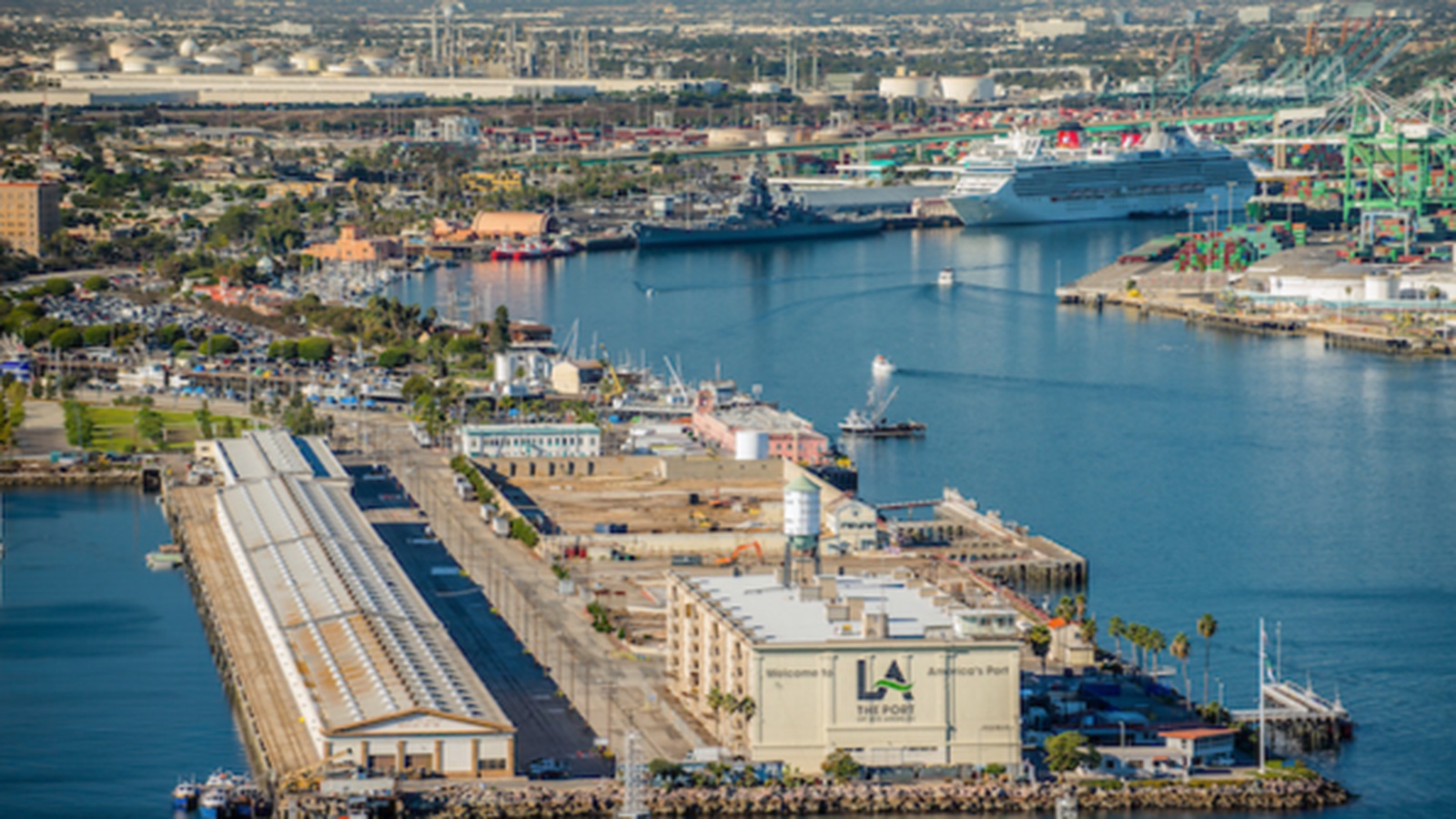
“Fix it now.” If yesterday’s Port of Los Angeles virtual press conference had a single message, that was it.
NAM President and CEO Jay Timmons joined Port of Los Angeles Executive Director Gene Seroka for a question-and-answer session on the manufacturing supply chain and “Competing to Win,” the NAM’s agenda for bolstering manufacturing competitiveness.
Labor uncertainty: Timmons acknowledged the positive steps taken by leadership of the Port of LA over the past 12 months to improve the flow of goods, but he noted that workforce concerns continue to create supply chain uncertainty across shipping modes.
- “One of the biggest issues slowing down our domestic supply chains is the labor uncertainty tied to critical infrastructure,” Timmons said. “For example, there was the real danger of a crippling rail shutdown last month. The NAM supported the administration’s efforts to reach an agreement to avert this, but negotiations are still ongoing, and there’s a deadline next month on Nov. 19.”
- The solution, Timmons said, lies with policymakers and industry, who “have to be vigilant about putting out these sparks before they turn into fires.”
Taxes: Timmons also discussed the need for a more favorable tax code, which plays a major role in the ability of manufacturers in the U.S. to compete, he said.
- “For example, a longstanding deduction for full and immediate expensing of research and development expenses is being phased out,” Timmons said. “Businesses will now have to amortize their R&D expenses over a number of years; that’s a huge disincentive that makes it costlier to conduct R&D within the U.S.—not to mention a potentially huge tax hike for small and medium-sized manufacturers at the end of the year.”
- China, meanwhile, allows manufacturers a 200% deduction for R&D expensing, giving that country a major advantage.
Workforce and immigration: Manufacturing is “in the middle of a workforce crisis,” Timmons said. Enacting new, better immigration policy and investing more in certain workforce programs can help solve it.
- Manufacturing has nearly 800,000 open jobs—and many of them could be filled if legislators would expand work-permit programs, Timmons said. “Clearly, we need border security, but we also need more avenues for people to come legally and to work.”
- There should be more federal investment in apprenticeship models, too, so that students can “earn while they learn” in manufacturing, he added.
All hands on deck: Congress must work to fix these issues “in a very bipartisan way,” Timmons said. “We hear all the time from elected officials, both Democrat and Republican, and even independent, that they want to be supportive of manufacturing.”
- “They understand that manufacturing is the lifeblood of any competitive economy … and we appreciate that. But we also need to make sure that in addition to saying good things about manufacturing, that elected officials are actually doing the things they need to do. That’s what [‘Competing to Win’] is all about.”
Timmons Talks Energy and Workforce in Michigan
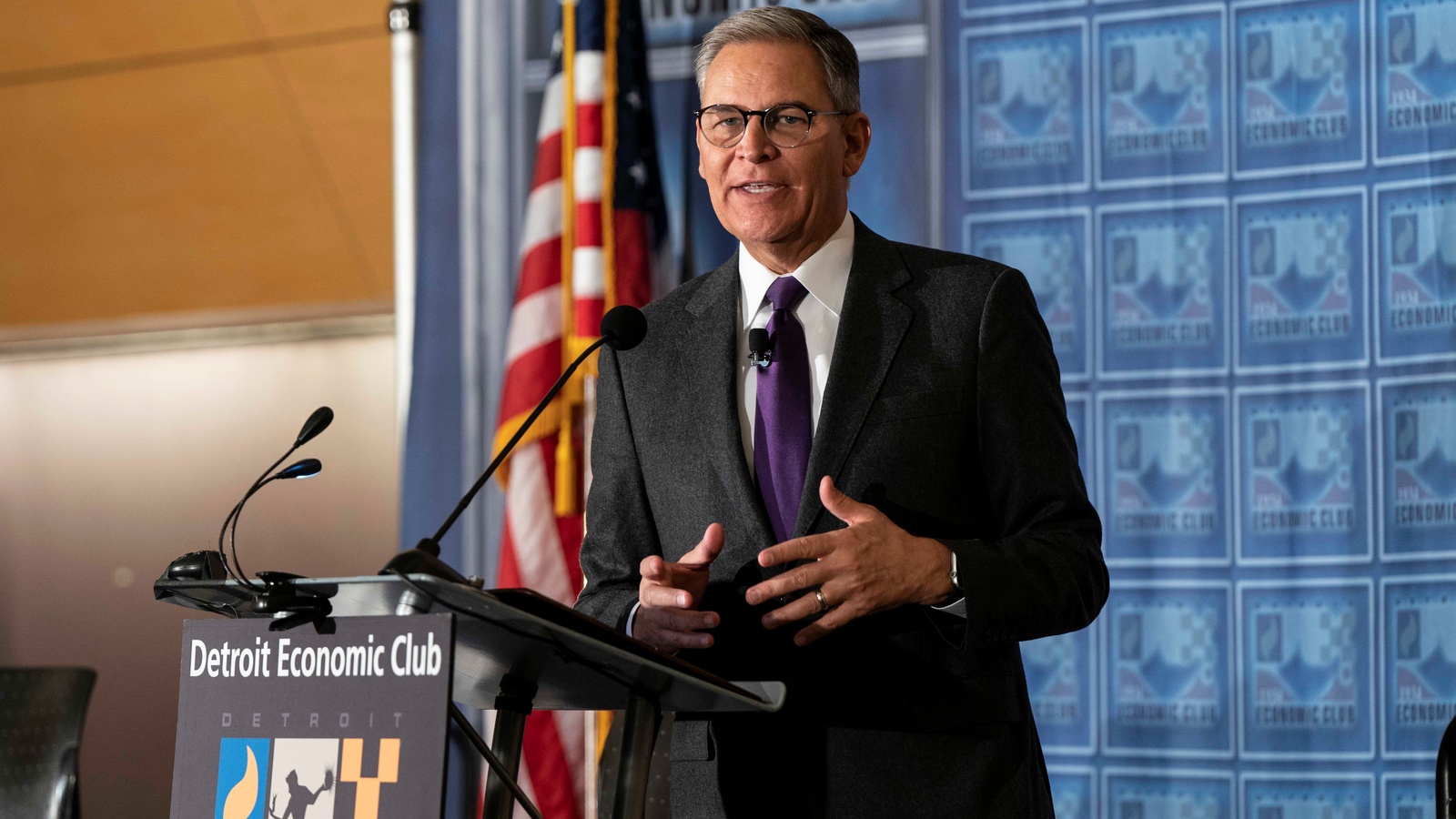
At a time of economic uncertainty, policy leaders must support energy and workforce development initiatives that can bolster the competitiveness of the manufacturing industry. This week, NAM President and CEO Jay Timmons traveled to Detroit, Michigan, to share that message at Oakland Community College’s campus in Auburn Hills. The Detroit Economic Club hosted the event.
- The NAM recently released an updated version of its policy blueprint, “Competing to Win,” which Timmons referenced in his remarks.
Energy: Timmons noted that access to abundant energy is a national security issue, especially in the context of Russia’s invasion of Ukraine, and highlighted manufacturers’ all-of-the-above energy strategy. He also laid out some of the key policies that will help achieve manufacturers’ goals.
- Timmons argued in favor of permitting reform; removing regulatory barriers; promoting reasonable access to federal lands; deploying energy-efficient technology at home and around the world; expediting processes for exporting energy technologies; rejecting new taxes on energy manufacturers; and fixing the tax code to preserve full expensing for equipment and 100% full expensing for research and development.
Workforce: Timmons spoke to the need for new talent in the manufacturing industry and called on young people to be a part of manufacturing’s future. He also laid out the NAM’s workforce policy agenda.
- Timmons advocated for expanding the Pell Grant program to include accelerated education for in-demand skills; increasing the level of tax-exempt educational assistance from employers; investing in apprenticeship models; and fixing the broken immigration system to alleviate visa backlogs, bring employer-based immigrants to the United States and provide certainty for Dreamers.
Our approach: “Americans want practical solutions,” said Timmons. “They don’t want to have to choose between the extremes. They don’t want to punish businesses for being successful any more than they want to punish businesses for being good citizens. So, in this season of campaigns, manufacturers have our own campaign to run. It is a campaign for a manufacturing competitiveness agenda, for restoring faith in what’s possible.”
The bottom line: “Since America’s founding, manufacturers have led amid pandemics and disasters, through wars and recessions, during peace and prosperity,” said Timmons. “And we will keep leading for centuries to come, staying true to the values that have made America exceptional and kept manufacturing strong: free enterprise, competitiveness, individual liberty and equal opportunity.”
In case you missed it: Timmons has been on the road promoting manufacturers’ priorities and the NAM’s competitiveness agenda to leaders across the country. You can catch up on his earlier speeches in Phoenix, Arizona, and Minneapolis, Minnesota.
